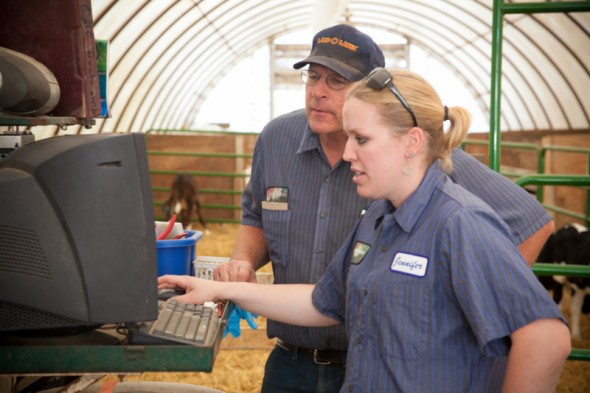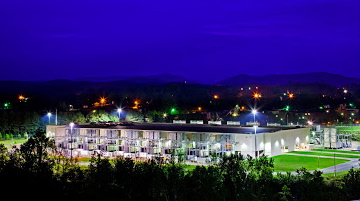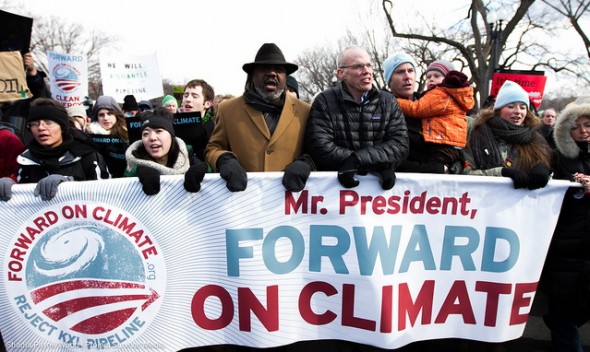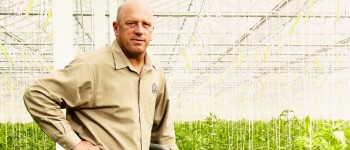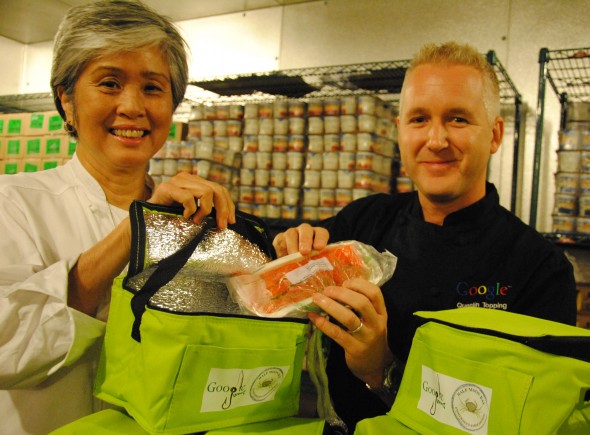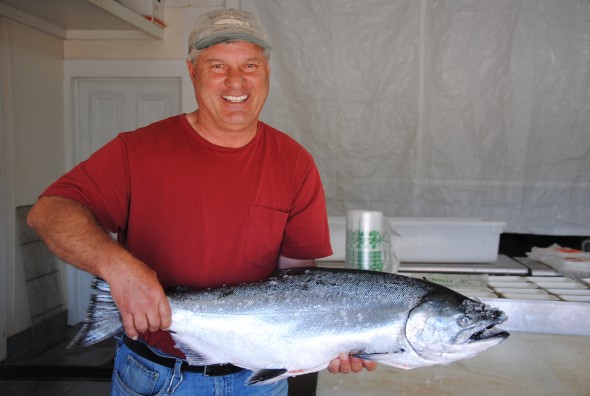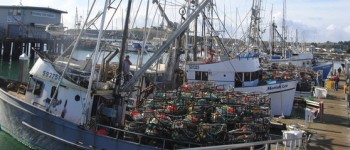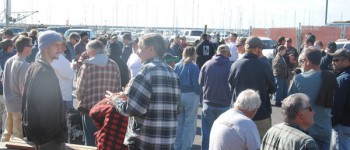GreenBiz | November 9, 2012

When Kimberly-Clark announced its plan to source 50 percent of its wood fiber to alternative sources by 2025 — more than the amount that’s in three billion rolls of toilet paper — the company wasn’t quite sure how it would make that happen.
It’s a tall order, even for the one of the world’s top suppliers of facial tissue, toilet paper and paper towels.
“We don’t know how we’re going to get there yet,” Brenda Nelson, a director of business planning and sustainability for the company’s family care division, told GreenBiz. “It’s not like there was a lot of precision around number and years,” she said of the pledge made in June.
So why would Kimberly-Clark, best known for its Kleenex, Huggies and Scott brand products, commit to an actual deadline? After all, Walmart famously announced goals to become 100 percent supplied by renewable energy and create zero waste — yet failed to disclose a timeline.
Like the advice given to Benjamin, the young man searching for a future in the 1967 film “The Graduate,” the answer lies in one word.
Kimberly-Clark is banking on bamboo.
“We did enough research on the fibers and potential barriers to know that it’s achievable,” Nelson said. “2025 was a date we put out there to hold ourselves accountable to make it happen.”
Mitigating risk
In 2011, Kimberly-Clark used 3.53 million metric tons of fiber to manufacture its products, according to company figures. Less than one-third of that amount – 1.05 million metric tons — came from recycled sources, the company reported.
Eighty percent of Kimberly-Clark’s product line contains wood fiber. Its primary sources are from the U.S., Brazil and Canada. In a 2011 report, the company describes itself as “highly reliant” on the material.
In the last few years, Kimberly-Clark has been hunting for a commercially viable alternative to wood fiber. In 2009, the company adopted a procurement policy requiring 40 percent of its fiber to be sourced either from FSC-certified or recycled sources by 2011. The move brought an end to a five-year campaign by Greenpeace pressuring the company to cut its ties with suppliers hawking non FSC-certified wood. The policy also banned the use of any fiber from endangered species.
But the motivation for the search extends beyond environmental reasons, Nelson says. It’s also an effort to insulate the company from a fiber market marked by volatile prices and a dwindling supply.
“We’ve taken a long look at what are the outlook and trends in virgin and recycled fiber supply,” she says. “There’s increasing pressures and demand on land that’s available. We know that where there’s constraints in terms of resources, we’ll someday have business impacts associated with them.”
To build the business case for alternative fibers, Nelson’s team examined a whole range of characteristics for several materials including bamboo and wheat straw, a product left over from wheat farming. They looked at fiber characteristics, biomass available, processing requirements and whether the infrastructure needed for processing was available. The group also identified barriers to commercializing the materials, along with broader trends that could affect the supply.
After a year of initial R&D tests, bamboo appears to have become the focus in the company’s alternative fiber strategy. Kimberly Clark is also evaluating other candidates, Nelson said, but declined to disclose more information.
With its ability to grow four times faster than trees — and without fertilizer, pesticides or a lot of water — the towering plant from Asia is a favorite for companies specializing in sustainable goods. As a result, the bamboo goods market has grown into a robust industry within the past ten years.
According to Susanne Lucas, executive director of the World Bamboo Organization, an industry association, the annual global bamboo market is currently estimated at $7 billion a year. In 2017, it’s expected to more than double to $17 billion, she says, due to increasing commercial applications such as combustion, pyrolysis, fibers, metabolites, water purification and phyto-remediation.
For Kimberly-Clark, bamboo’s ability to grow in the southeastern U.S. as well as be processed locally at wood pulping plants is significant, as the company won’t need to invest in new infrastructure, Nelson said.
Of course, Kimberly-Clark isn’t the first company to take steps toward sourcing sustainable bamboo. Cape Cod, Mass.-based Bum Boosa, which makes bamboo toilet paper and baby wipes, sources its bamboo from an FSC-certified supplier in China, according to owner Sonja Sheasley. Sheasley says she turned to a Chinese source since they accept smaller orders.
But for companies as large as Kimberly-Clark, volume is a problem.
Because bamboo only flowers once every 60 to 100 years, there hasn’t been enough of a supply to keep up with the demand. Bamboo forests around the world have been overharvested to meet consumer demand. In fact, half of all bamboo species are at risk of extinction due to forest destruction, according to a report issued by the United Nations.
Upturning sourcing on its end
But Kimberly-Clark’s development deal with Booshoot, a tiny biotech upstart located north of Seattle in Mt. Vernon, Wash., has the potential to upturn bamboo sourcing on its end — for the better.
Over the course of 12 years, Booshoot developed a now-patented method using non-genetically modified tissue culture to grow large volumes of bamboo fast enough for it to be sourced at commercial scale.
“We shattered that scientific bottleneck … it’s really a complicated cloning process,” said biologist Jackie Heinricher, Booshoot’s founder.
Booshoot’s technology created the solution Kimberly-Clark was looking for: A way to develop a recycled fiber source that could deliver the high volume it needed in a sustainable and economical way.
The deal
Under its development deal, Booshoot is providing Kimberly-Clark with tens of thousands of bamboo starts for its R&D projects.
The goal: to bring bamboo into the company’s fiber fold.
Kimberly-Clark is testing the plants to see if they can grow efficiently, and whether the fiber will hold up to standards expected by consumers, such as strength and softness.
Though not exclusive, the focus is on the Moso species, a giant that grows up to 100 feet tall, produces more fiber than wood and captures four times more carbon than most trees. Because of its fast growth, less land is needed to grow bamboo fiber when compared to the same amount of wood fiber. It can be harvested in less than a decade.
If the material passes the tests, Kimberly-Clark will become the largest grower and processor of bamboo in the U.S.
Nelson said her company is also investigating how to process bamboo “with a lighter footprint, less complex processing and a higher yield” than the predominant method currently used, which includes carbon disulfide, sulfuric acid and sodium hydroxide among its inputs. Bamboo goods company Bum Boosa employs a processor that uses water, steam and friction to pulp the cellulose, Sheasley said.
Kimberly-Clark’s trials are being conducted with the potential of using bamboo in products across all types of its tissue products, Nelson said.
Working with a team of external consultants and advisors, the company is also conducting a lifecycle analysis for its products that might be manufactured with bamboo.
“It’s challenging – especially in this case to do a LCA on something theoretical,” Nelson said. “We can’t say for sure when the work will be done. But if it shows a negative impact on the total lifecycle, that would cause us to pause.”
One of the issues that the team is investigating is whether bamboo could have an invasive effect on local ecosystems — something that’s commonly associated with the plant.
The ripple effect
“It’s a really bold move,” said Richard Brooks, a Greenpeace forest campaigner in Toronto, Canada, who led the successful campaign against Kimberly-Clark that ended in 2009.
Brooks predicts Kimberly-Clark’s alternative fiber goal will send ripples throughout fiber supply chains.
“We’ve seen it before,” he said. “You can be sure there are other Fortune 500 companies looking into alternative fibers.”
“It’s actually hard for companies to be the first to make the first move,” Brooks said. “We’re seeing Kimberly-Clark make the move, get early adopter status and benefits — and other companies quickly follow them.”
It’s not clear yet whether Procter & Gamble and Georgia Pacific — Kimberly-Clark’s largest competitors in the market — will follow suit.
In the months following Kimberly-Clark’s announcement, Brooks reports that an increasing number of companies around the world who source fiber — and their pulp suppliers — are asking Greenpeace for guidance about alternatives.
“The conversations we’re having with these companies are more sophisticated,” he says. “They’re seriously exploring how to start purchasing these types of pulp.”
Brooks, who thinks the 50 percent reduction goal by 2025 is “realistic,” gives credit to Kimberly-Clark. “It’s the first time we’ve seen a large announcement that puts a number out there and puts research dollars behind it,” he said.
Still, he cautions that there are some actions that the company needs to take as part of its effort to source alternative fiber at commercial scale.
“There is no third party certification system for alternative fibers. Right now, Kimberly-Clark needs to come together with other companies and define some minimum criteria before certification is set up,” he said, referring to social, labor and environmental standards.
He also emphasizes that any potential use of post-agricultural wheat straw must be weighed in consideration with the global food supply.
Clark has been working with Kimberly-Clark along with a group of other external advisors on developing a socially and environmentally responsible alternative fiber supply chain.
“We know that we can’t do this alone,” Nelson said. “Getting the right partnerships in place, identifying the stakeholders and who to have conversations with — it’s all important to be successful.”
“It really is the next step of where the pulp and paper sector and companies need to go,” Brooks said. “We simply don’t have enough forests to be able to supply the growing demands of consumers.”
Photo of bamboo in test tubes courtesy of Booshoot
View the original story.


 The company grew from one pilot location in 2007 to more than 200 filtration station-ATM combos in villages of at least 5,000 people each across India. One resident per village can purchase a franchise for about 30,000 Indian rupees, about $500, and sell the filtered water for a penny per liter, he said.
The company grew from one pilot location in 2007 to more than 200 filtration station-ATM combos in villages of at least 5,000 people each across India. One resident per village can purchase a franchise for about 30,000 Indian rupees, about $500, and sell the filtered water for a penny per liter, he said. Sarvajal has secured the go-ahead from the local government in the metropolitan area around New Delhi to set up some 50 filtration station-ATM units — areas without regular access to drinking water.
Sarvajal has secured the go-ahead from the local government in the metropolitan area around New Delhi to set up some 50 filtration station-ATM units — areas without regular access to drinking water.
